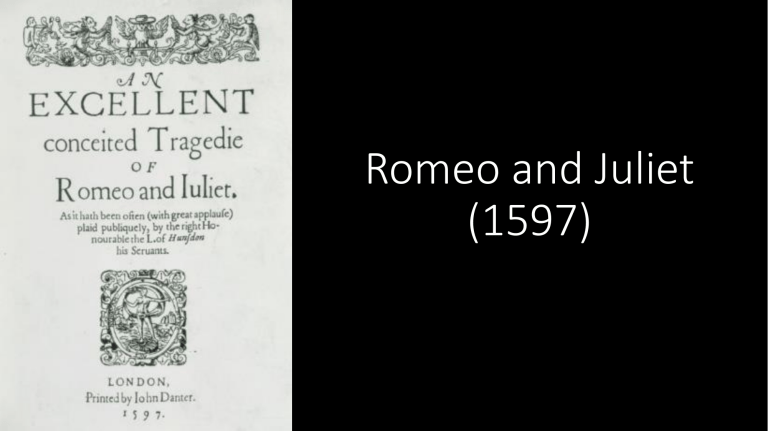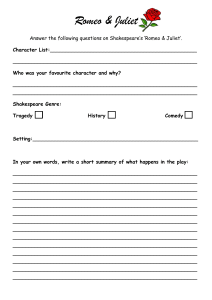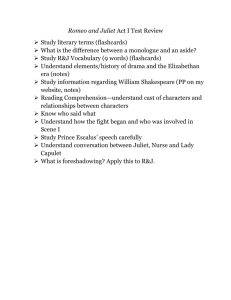
Romeo and Juliet (1597) Renaissance Italy • England vs Italy • Shakespeare criticises the Italian influence on English culture • Shakespeare draws on stereotypes about Italy Women in Elizabethan England • Lower social status • No legal rights • Property of men • Weren’t allowed on stage Women in Shakespeare • Juliet is unconventional • And so are many of Shakespeare’s female characters Intertextuality – The Tragical History of Romeus and Juliet (1562) Intertextuality – Metamorphoses (8 AD) Tragedies • Romeo and Juliet is one of Shakespeare’s tragedies. • Originally theorised by Aristotle • Although it deviates from this • Catharsis • Other tragedies include Macbeth, Othello, and Hamlet Writing about context • Think about audiences and how they’d react • Think about the differences between Elizabethan England and Britain today • Think about (a)typicality Writing about context In Act 1, Scene 2, Shakespeare presents Lord Capulet as a generous man. He tells Paris that ‘An she agree, within her scope of choice/ Lies my consent and fair according voice’. By presenting this idea in an heroic couplet, Shakespeare is showing that Juliet’s consent to her marriage is of utmost importance. This would have been atypical for men in Elizabethan England who were generally seen to own their daughters and usually made decisions about who they’d marry without considering their feelings. However, Capulet’s generosity may be intended to reflect the stereotype that existed in England, that Renaissance Italy was a freer society than England. Have a go




